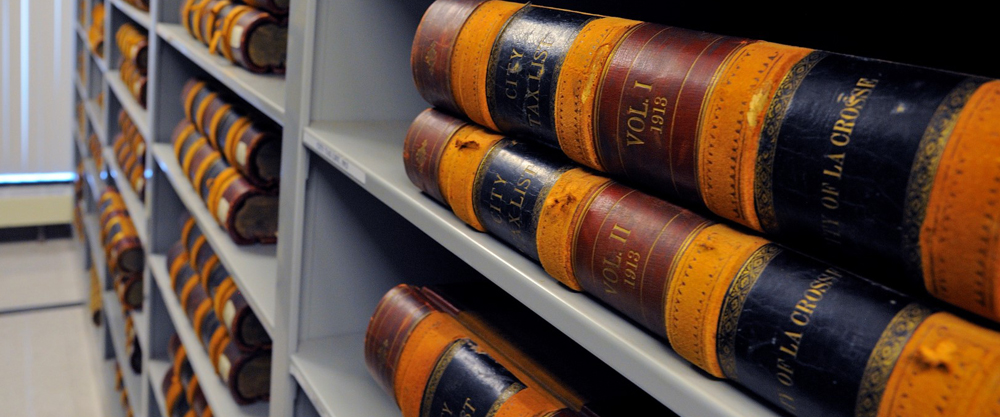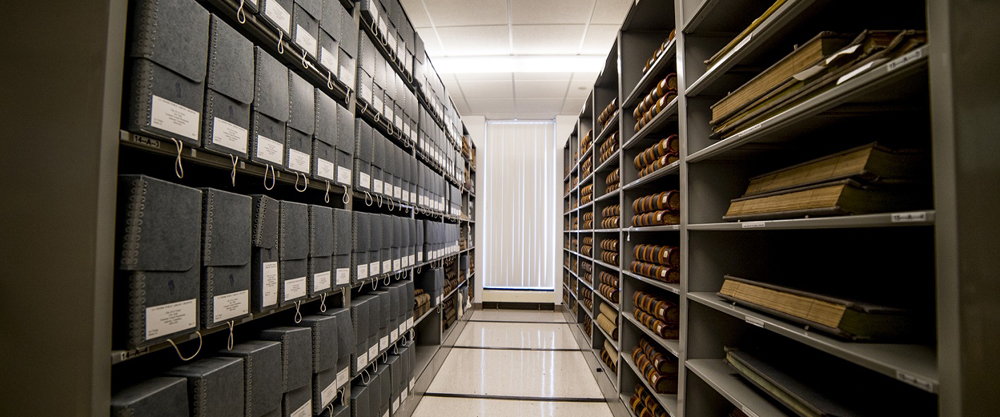LA CROSSE HISTORY
unbound
THE LA CROSSE AREA'S HISTORY, DIGITIZED
What are Finding Aids?

Unbound Collections
- Browse All Titles
- Formats
- General Histories
- Area Genealogy
- Accidents & Disasters
- Agriculture
- Archaeology
- Architecture
- Arts & Music
- Businesses & Industries
- Cemeteries
- Economy
- Education & Schools
- Events & Festivals
- Government
- Health & Healthcare
- Historic Sites
- Literature
- Military & War
- Natural Environment
- Neighborhoods
- Organizations
- Parks
- Peoples & Cultures
- Politics
- Press & News Media
- Religious Groups
- Sports & Recreation
- Transportation
What are finding aids?
A finding aid is a tool that explains what a specific archival collection contains—both physically in its contents and intellectually in its information. Researchers use finding aids to determine whether information within a collection is relevant to their research topic. Finding aids are not primary or secondary sources and are never to be cited in your research. Only materials from the collection should be cited.
Every repository writes finding aids in their own way, but they will almost always give you the following information:
- a description of the materials
- how big the collection is
- where to find the boxes on the shelves
- context—or background—as to why the collection is significant
- the order of the boxes and folders and what they each contain
- where the collection came from and why the archives has it
- how to create a citation for the collection in your paper
Sometimes finding aids use unfamiliar words that users may not understand. Visit this Glossary of Archival Terms to find definitions and explanations if you are ever confused by a term used in a finding aid.
Why are finding aids useful?
When collections are large, researchers can use finding aids to save time and effort. Researchers may only need one source in an entire collection, but if there are 25 boxes of materials, that one source could be impossible to find without the help of a finding aid to guide them.
Finding aids save time! Researchers will have more time to put their feet up and lounge after a long day of archival research.
Archivists always recommend that researchers skim the finding aid before looking at a collection. It's even a good idea to look at a finding aid before visiting the archives when possible. Many institutions have their finding aids available online.
- La Crosse Public Library Archives has all their finding aids available on their website
- UWL Murphy Library Special Collections and Area Research Center has most of their finding aids on the UW Digital Collections website for Archival Resources in Wisconsin. This website also includes finding aids from many other Wisconsin archives.
If you're ever unsure, contact the archives with your question.
Finding Aid Breakdown
[Summary Information]
Listed below are details that give a short summary of the collection. It is important to read through this part of the finding aid first to give you an idea of what the collection holds.
[Abstract]
This is a short paragraph describing what the collection physically contains and what years it covers.
[Collection Title]
The collection's title should be descriptive, letting you know where the collection came from, what it might contain, and the years that it spans.
[Date of Materials]
The dates that the materials cover. Sometimes materials are undated.
[Creator]
The name of the organization, person, or business who created the materials found in the collection.
[Call Number]
The call number is a unique identifier, which tells the archivist where to locate the collection on the shelf and also informs you, the researcher, how to cite the collection. It it important to know that only archives staff members have access to the shelves, so you should not expect to pull the materials yourself.
[Amount]
The size of the collection, usually told in linear or cubic feet, which refers to how much shelf space the boxes take up.
[Physical Description]
This conveys how many boxes are in the collection—it could be only one or two boxes, or it could be hundreds. As a researcher, you need to know how many materials are available to you so you know if you should narrow the scope of your research, or your thesis.
Sometimes materials are in oversize boxes because they are large—an archivist will warn you if you should expect something heavy, fragile, or large.
[Language of Materials]
Archival materials come in all languages! As a researcher, you need to know what languages are used in the materials before you plan on traveling to the archives to look at the materials. This is where you can check to make sure you know the language used in the collection.
[Repository]
In case you are unsure of where the collection is held, this is where you can see which library, archive, or history center houses the collection you want to use. It also helps with citing your archival materials.
[Preferred Citation]
Each repository has its own preference for how researchers cite their collections. This is where you can find guidance in citing the materials you use in your research. If the repository does not have this included in their finding aid, you can always ask a staff member to see what they prefer!
[Historical Note]
This section of the finding aid is written by the staff member who processed the collection. It recounts a short history of where the collection came from or who created and donated it. Often, this means a history of the organization, person, or business that created the materials.
[Scope and Content]
This section describes exactly what years and types of materials are found within the collection, which means it describes the information you will find while using the collection.
[Arrangement]
Collections often come to the archives unorganized. Archivists and staff members sort through the collection and organize it so patrons can use it more easily. This means organizing it into sections—or series. This section of the finding aid lists the series that the collection is organized in, which is called the organization scheme.
[Administrative Information]
This section lists information that researchers do not usually need to use, but it is made available to them. Typically, only archivists need this information.
[Publication Information]
The repository where the archival materials were made accessible.
[Access to Materials]
Sometimes donors of archival materials want a certain section of the collection to be restricted to patron use, often for a certain amount of time, for privacy reasons. If part of the collection is restricted, that information is conveyed here.
[Acquisitions Information]
This lists who donated the materials, if the donor consents that to be public knowledge.
[Processing Information]
The staff member(s) who helped organize and process the collection for patron use. Usually this is the same person who wrote the finding aid, but not always.
[Related Materials]
This section recommends other materials at the repository that could help you with your research.
[Controlled Access Heading]
This section lists subject headings, which are terms assigned by the Library of Congress to describe the information contained in a book or archival collection. Sometimes these subject headings are linked to other related materials that have the same subject heading assigned to them.
[Collection Inventory]
This is arguably the most helpful section of the finding aid for the research process. This section has a detailed box and folder list—or arrangement—for the collection, which means you can find the exact location of the materials you are interested in viewing for your research.



